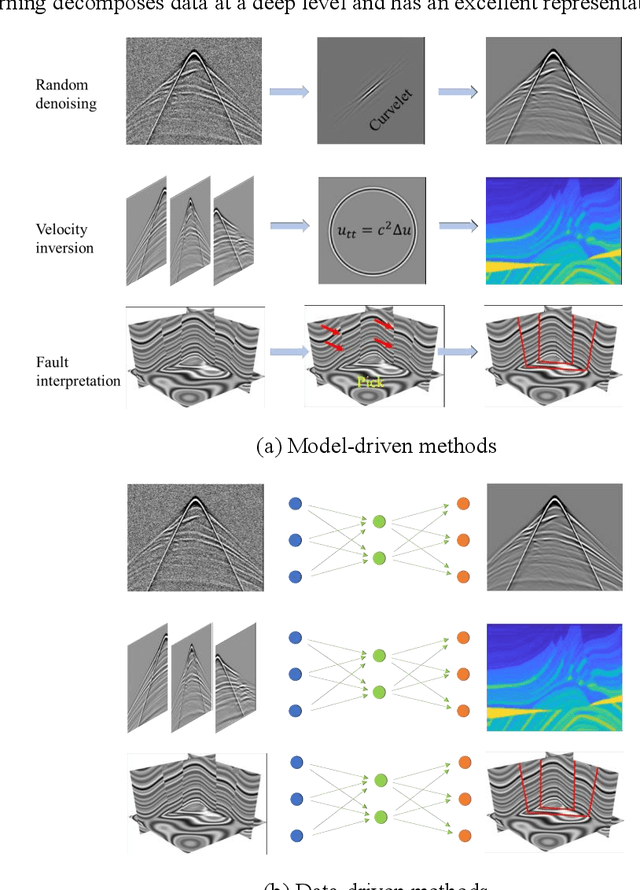Data-driven geophysics: from dictionary learning to deep learning
Paper and Code
Jul 13, 2020



Understanding the principles of geophysical phenomena is an essential and challenging task. Model-driven approaches have supported the development of geophysics for a long time; however, such methods suffer from the curse of dimensionality and may inaccurately model the subsurface. Data-driven techniques may overcome these issues with increasingly available geophysical data. In this article, we review the basic concepts of and recent advances in data-driven approaches from dictionary learning to deep learning in a variety of geophysical scenarios, including seismic and earthquake data processing, inversion, and interpretation. We present a coding tutorial and a summary of tips for beginners and interested geophysical readers to rapidly explore deep learning. Some promising directions are provided for future research involving deep learning in geophysics, such as unsupervised learning, transfer learning, multimodal deep learning, federated learning, uncertainty estimation, and activate learning.
 Add to Chrome
Add to Chrome Add to Firefox
Add to Firefox Add to Edge
Add to Edge